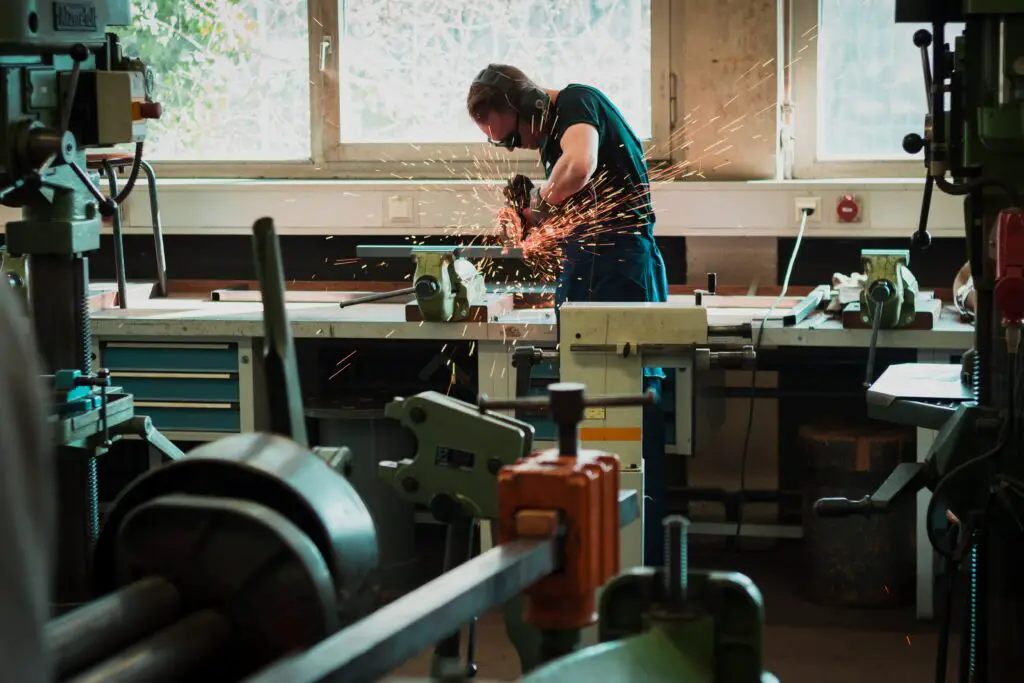Power drills are essential tools for home remodeling and all types of minor or major activities around the house. Whether for home improvement or for other professional use, drills are important. Creating holes, loosening or tightening fasteners, and even chiseling away materials can all be done with the appropriate drill. You can use needle-thin bits to drill tiny holes for craft items or giant hole saws to cut through drywall and other soft materials up to 5-inches in diameter.
To use the maximum potential of your drill, use a driver bit to push screws directly into wood. This method is applicable for various (if not all) projects, may they be for your household or for heavy constructions. Combining this ability of incorporating various techniques for dealing with both surfaces and materials may just be the most winning combination you’ll ever have. You’ll also be able to complete various DIY jobs and projects easily.
The variety of sizes and shapes makes a drill unique. Our comprehensive article will provide you with everything you need to know about drills and assist you in selecting the ideal option for your needs.
Drills as Screwdrivers with High-torque
These cordless screwdrivers are perfect for any of your screwdriver projects around the house. They’re ideal for tightening loose screws in remote locations and swiftly assembling flat box furniture because they’re cordless. Drill drivers are more convenient and heavier to operate than these handy tiny power instruments. These tools have forward and backward settings, but they cannot drill holes.
The majority of cordless drills are designed to be screwdrivers. Almost every cordless drill on the market has variable speeds and clutch, making it possible to drive and remove screws easily. But you’ll need a suitable drill bit for your screw to drive screws with your drill/driver. Typically, this is a Phillips + or Flathead – bit, but finer screws may necessitate a star screw or other uncommon bits.
Drill with a Hammer
From putting up shelves to securing gutters, a hammer drill is ideal for the more heavy-duty activities around the house. Hammer drills, also known as impact drills or percussion drills, are powerful tools that can be used to drill concrete and masonry. Multiple torque settings allow you to control the power while keeping the RPM low. This function allows you to power through tough materials while minimizing surface damage. Too, impact drills have a reverse screwdriver function that hammer drills do not always have.
Take note that the power and rotational motion are the key differences between a normal drill and an impact drill. The fundamental distinction is in the force applied to the drill head. The hammer function knocks on the hammer drill’s head, pulsating rather than rotating. This knock has a force many times larger than the impact function used by an impact drill. Because a hammer drill has to drill through considerably tougher materials, it has to be more forceful. This enables the drill to pass through the stone wall as well. The pounding force of the hammer is also measured in joules.
The larger the holes you can make with a hammer drill, the faster you go through concrete, and the more powerful it is.
Drill as Impact Driver
Impact drivers are generally used as heavy-duty screwdrivers for projects that require repetitive or big screw driving. It employs an impact mechanism that assists in reducing the impact on your wrist by performing more of the heavy lifting for you. Due to their high torque capacity, they are efficient for tightening bolt heads and nuts, while also drilling into metal. In addition, impact drivers are slightly more compact and lightweight when compared to drill drivers.
And unlike a normal drill, an impact driver includes a quick-release spring-loaded chuck that accommodates 14-inch hex-shank driver bits. This tool is meant to drive wood and sheet metal screws, but with the help of an impact-rated socket, it can also turn into a bolt. An impact driver’s compact size makes it easier to wield than a cordless drill, especially in tight spaces or while standing on a ladder. It drives screws and bolts by applying concussive rotating force to the head. When the fastener stops or binds, this generates substantially greater torque than a drill while being less prone to twist your wrist.
Drill with Hole-saw
The hole saw is made up of a cylindrical saw blade mounted on an arbor. It is a saw blade attachment for a power drill that has a ring-shaped blade. The arbor is a spindle-like tool that holds other moving tool components in place. A drill bit is frequently mounted to the arbor, as is the case with many holes saws. Apart from this, hole saws frequently come with a drill bit connected so that you can drill a starting hole before cutting to keep the saw blade aligned and secured.
The first hole is often called the “pilot hole.” Cutting a hole using a hole saw can be seen on DIY guides and hole saw usage guide books. The arbor and the drill’s chuck, typically 3/8 and 1/2 inch drill chucks, connect the hole saw to the power drill. It’s then spun at high speeds to cut holes in various materials, including wood, metal, plastic, and even brickwork. Cutting a hole in the floor using a hole saw circular is not only helpful in preparing the installation of drainage pipes and plumbing fixtures, but for a variety of other purposes as well.
Corded and Cordless Drills
Corded and cordless are the main distinctions of a power drill. High-capacity corded drills offer dependability and durability at the penalty of being permanently linked to an electric cable. Thus, make sure to select the power drill that will best suit your requirements and ability. Most people believe that corded drills are limited in their applications compared to cordless drills. This is not the case, however. High-power corded drills have the maximum work-production capacity since they have constant power.
If it’s cordless, you won’t have to worry about finding an outlet near your project to power it. You won’t also have to drill holes and drive screws at the same time. The good news is that you can find these drills almost anywhere. The bad news is that deciding which drills to consider isn’t always easy. On the other hand, the cordless ones have limited battery life and may run out of juice in the middle of a project. Furthermore, high-power corded drills offer a wider speed range and last longer than wireless drills.
A good high-powered corded drill should be able to drill through anything, from wood to metals, with ease.
Final Takeaway
When used incorrectly, power drills can be deadly. When operating a power drill in any capacity, whether drilling holes or driving bits, always wear eye protection. Also, wear hearing protection. While drills may not produce the same noise level as louder equipment like circular saws, their average of 65 decibels can damage a user’s hearing over time. When power drills whirl out of control, they can strain or break your wrist or hand. This occurs when the drill’s torque exceeds the opposing force you are manually applying, so take care and know all these reminders before you start using your drill.
Happy Drilling!







